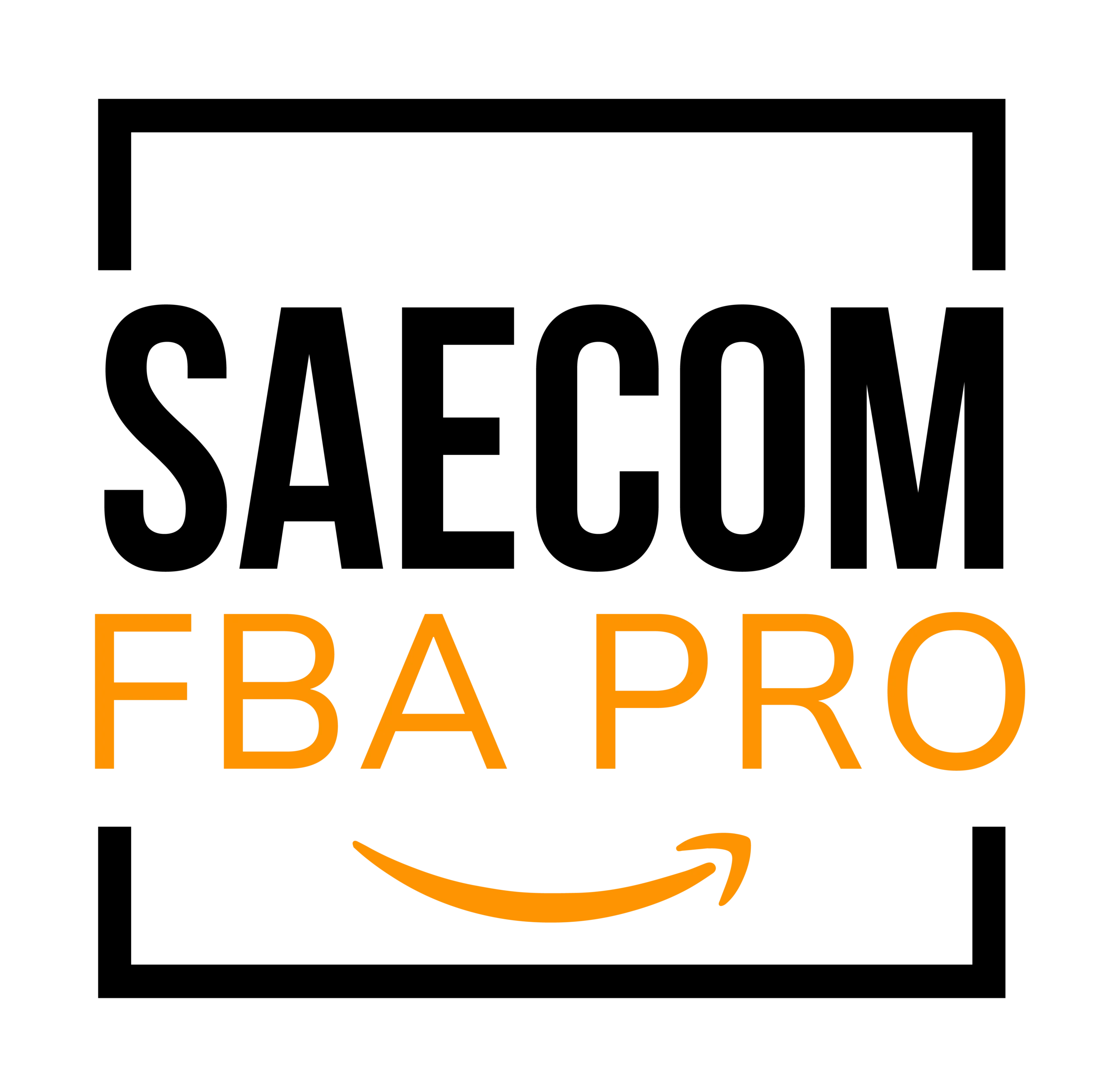How to sell dangerous goods on Amazon?
While it’s obvious that hazardous materials like radioactive waste cannot be sold on Amazon, many everyday products are surprisingly classified as Hazmat.
If you’re curious about the distinction between Hazmat and Amazon’s dangerous goods classification, the truth is there isn’t one. Hazmat products are simply referred to as dangerous goods by Amazon, but the terms are interchangeable.
The term “dangerous goods” often sounds more alarming than it actually is, but it’s still a classification that must be taken seriously.
Let’s dive into the Amazon FBA Dangerous Goods Program so you can better understand it and be prepared to address any potential challenges.
What is the FBA Dangerous Goods Hazmat Program?
Hazardous materials, commonly known as Hazmat goods, consist of substances that may pose health and safety risks if not managed properly. To address these risks, Amazon established the FBA Dangerous Goods program, designed to protect both its employees and customers when handling potentially harmful products.
As mentioned earlier in this guide, many hazmat items are everyday products that we all use regularly. Despite their common nature, Amazon is committed to ensuring these products are stored, handled, and shipped safely. This responsibility is the core purpose of the FBA Dangerous Goods program.
Products Classified as Hazmat or Dangerous Goods
Hazardous materials are categorized into nine distinct classes, each encompassing various products and materials further divided into specific divisions:
- Explosives
- Flammable Gases
- Flammable Liquids
- Flammable Solids
- Oxidizers
- Toxic and Infectious Substances
- Radioactive Materials
- Corrosives
- Miscellaneous Dangerous Goods
While not all classes are entirely prohibited on Amazon, many divisions within these classes are classified as dangerous goods and are strictly prohibited from being sold on the platform.
Let’s delve into the details of what Amazon FBA sellers are allowed and not allowed to list on the platform.
What Counts As Hazmat Products on Amazon?
Explosive, toxic, or highly flammable items are almost always classified as hazardous materials. However, many seemingly harmless products can also fall into this category.
Examples of products that may be considered hazardous materials or dangerous goods include:
- Electronics like laptops, cameras, cell phones, tablets, tools, and chargers.
- Items containing magnets, such as speakers, headphones, and children’s toys.
- Chemical-based products like glue, dyes, and aerosol sprays.
A notable example is lithium batteries. A quick ASIN search in Seller Central, which we’ll cover in the next section of this guide, shows that Ryobi lithium batteries are classified as dangerous goods. Despite this classification, these products can still be sold on Amazon.
How do I know if my product is classified as Hazmat?
There are a couple of ways to determine if your product will be classified as dangerous goods by Amazon. First, you can request documentation such as a Safety Data Sheet (SDS) from your supplier. Second, you can search for the product’s ASIN within Seller Central.
If you’re unsure how to find the ASIN, the Keepa extension can help. It allows you to easily retrieve the ASIN directly from the product page.
Once you have the ASIN, navigate to the appropriate page in Seller Central. About halfway down the page, you’ll find a section where you can search using the ASIN. After entering the ASIN, you’ll receive an immediate response.

For example, when searching with the ASIN for a Ryobi lithium battery, we also tested a popular lighter fluid ASIN. The results showed that the product could still be sold on Amazon, but the seller must participate in the FBA Dangerous Goods (Hazmat) Program.
Below the message, there’s an option to request enrollment in the program if needed.

What Are All The Amazon Hazmat Products?
Amazon provides a wealth of helpful articles within Seller Central, and the table below highlights examples of products from popular categories that could be classified as dangerous goods.
| CATEGORY | HAZMAT PRODUCTS |
| Apparel | Items like hats or vests with rechargeable batteries, hat stiffener and stain remove products. |
| Automotive | Various engine, tire and paint or interior care products. Oils and engine fluids, batteries, airbags. |
| Baby | Antibacterial products and grooming and skincare items. |
| Beauty and Personal Care | Spray deodorants, hair sprays, colors, dyes, perfumes, tanning oils, essential oils, aftershave, insect repellent, nail polish an many more. |
| Books | Song books (contains batteries) and e-book devices. |
| Consumer Electronics | Cell phones, power banks, speakers with magnets. |
| Food and Beverage | High alcohol content products, aerosol food products, essential oils. |
| Health and Household | Cleaning, laundry and dishwashing products. |
| Home Improvement | Pest control products, grill products. |
| Office | Printer inks and toners, glues and adhesives, various markers and pens. |
| Pet Products | Eye and ear care, flea or tick control, deodorants, remedy creams and various cleaning products. |
| Shoes | Light up shoes and shoe cleaning or polishing products. |
| Sports and Outdoor | Airsoft supplies, camp stoves, e-bikes and scooters, batteries, life-saving vests. |
| Toys | Kits with paints or sprays, chemistry or building kits, battery operated toys. |
| Video Games | Controllers, headsets and gamepads. |
Please note that this is not an exhaustive list but rather a summary of items that might fall under the category of dangerous goods. Always review the Safety Data Sheet (SDS) from your supplier and utilize Amazon’s ASIN lookup tool for verification. It’s always better to err on the side of caution.
How Can You Sell Hazmat Products on Amazon?
You can apply to join the FBA Dangerous Goods program through Seller Central, but wait times are often unpredictable. Occasionally, Amazon completely closes the program and doesn’t even allow new applicants to join the waitlist.
Members of our Facebook group have reported being on the waitlist for over 12 months without receiving any updates.
Hopefully, Amazon will make improvements to the program, allowing more sellers to gain approval for selling dangerous goods through FBA.
In the meantime, being Hazmat-approved offers a significant advantage due to the higher barrier to entry. Many online arbitrage sourcing list providers exclude hazmat products, so you’ll need to invest extra effort into manually sourcing potential items to sell.
Additionally, you might explore Merchant Fulfilling dangerous goods, provided they are profitable and properly shipped according to regulations.
What is the Amazon Hazmat Review Process
The Amazon hazmat review process is fairly straightforward, but the key is ensuring you have comprehensive information about your products.
For products already classified as dangerous goods or new items you’re listing, you’ll need to provide Amazon with a Safety Data Sheet (SDS). We’ll cover more details about SDSs in the next section.
If an SDS is unavailable but your product qualifies for an exemption, Amazon offers two exemption sheets to address such cases.
What is a Safety Data Sheet (SDS) and How Do I Get One?
A Safety Data Sheet (SDS) is a document that provides details about the hazardous materials contained in a product. Product manufacturers are typically responsible for supplying the SDS for any products they produce.

contains essential information on proper handling, storage, and transportation of a product. It also outlines procedures for managing spills or safely disposing of the product when necessary.
This information is crucial for FBA warehouses to maintain the safety of their workers and protect Amazon customers.
The most straightforward way to obtain an SDS is by requesting it from your supplier or the product manufacturer. If you’re unable to find the SDS for a product you wish to sell, you may need to have one created by using an SDS authoring service.
How Do I Apply for a SDS Exemption?
To apply for an exemption, you must first meet the criteria of one of the following categories:
- Battery and battery-powered products
- Products free from harmful chemicals
Additionally, Amazon has a comprehensive policy on lithium batteries, which can be accessed within Seller Central. It is important to review this if you intend to sell any lithium battery products.
To request an exemption under one of the categories listed above, download the relevant exemption sheet from Seller Central.

The exemption sheets are simple to complete, but ensure you read them carefully and fill them out properly. Failing to do so could result in your exemption being denied, wasting valuable selling time!
How Does Hazmat Impact Your Sales?
If you’re selling a product and Amazon informs you that it has been classified as a dangerous good, your sales will likely be affected. Typically, Amazon will pause your listing while requesting additional documentation from you. This downtime can be frustrating, but it’s unavoidable.
If your listing is categorized as a hazardous material, it may take around 4-5 weeks to obtain the required approvals and for Amazon to transfer your products to an FBA facility equipped to handle hazardous items.
How to Identify If Your Product is Hazmat
In addition to using general common sense, there are several methods to determine if the product you plan to sell is classified as a dangerous good. While hazmat labels are often displayed on product packaging, the absence of a label does not automatically mean the product is free of hazardous materials.
Always ask your supplier for a safety data sheet (SDS) and carefully review its contents. The SDS will detail any potential hazmat concerns, and it’s recommended to submit it to Amazon, regardless of your personal assessment of the product.
Is it Better to Just Avoid Selling Hazmat Products?
This is entirely up to you as a seller, but FBA dangerous good sellers quite often do well because there is less competition.
What Happens if I Fail to Provide the SDS or SDS Exemption Sheet?
If you fail to provide Amazon with a safety data sheet then your listing is likely to be suspended. You absolutely need to provide the SDS or the SDS exemption sheet when requested to do so.
How can you Resolve Amazon Hazmat Reviews quickly?
The best way to resolve Amazon hazmat reviews quickly is to make sure you obtain all of the relevant information, like your SDS, and provide it to Amazon without delay. Ensuring that your product listing information matches the SDS is also a critical part of ensuring the review process is completed quickly and without rejections.
The Ultimate Guide to Amazon Hazmat and FBA Dangerous Goods
This topic can quickly become complex, but understanding it is crucial for all FBA sellers. It’s not much different from being familiar with Amazon’s restricted categories—it’s simply an essential part of selling on the platform.
While Amazon provides plenty of information, their Seller Central pages can easily become overwhelming. That’s why we’ve created this concise guide to help you navigate the world of Amazon FBA and hazmat reviews. You can also reach us out using our contact us form
https://saecomfbapro.com/contact-us/ , we can then schedule a call to guide you through. Otherwise, you can just use our Amazon expert services to do it for you.


